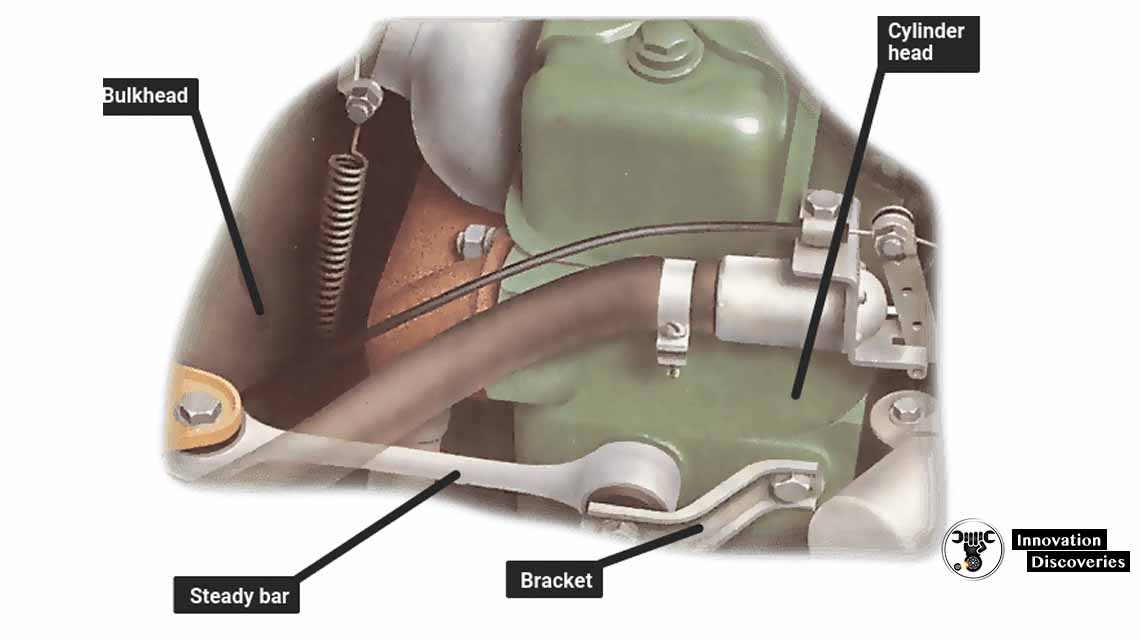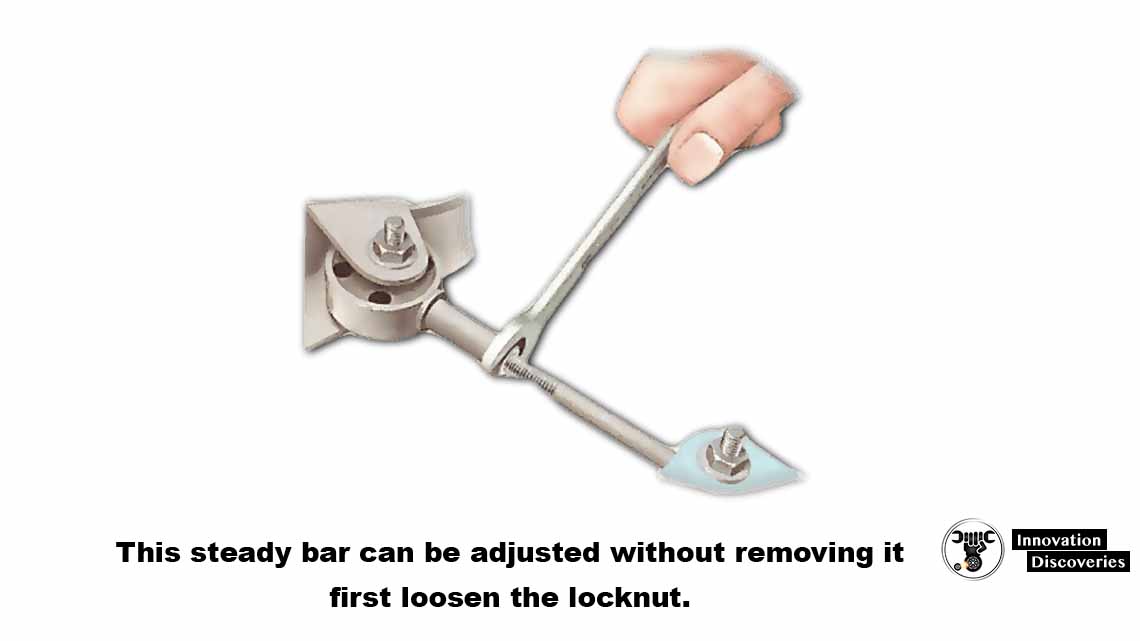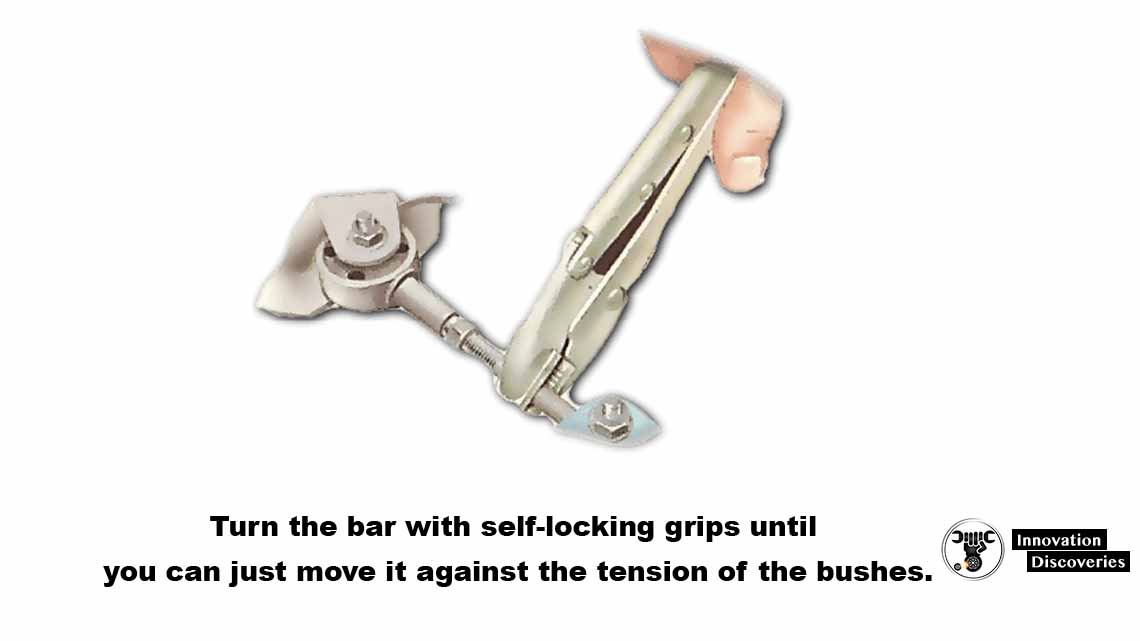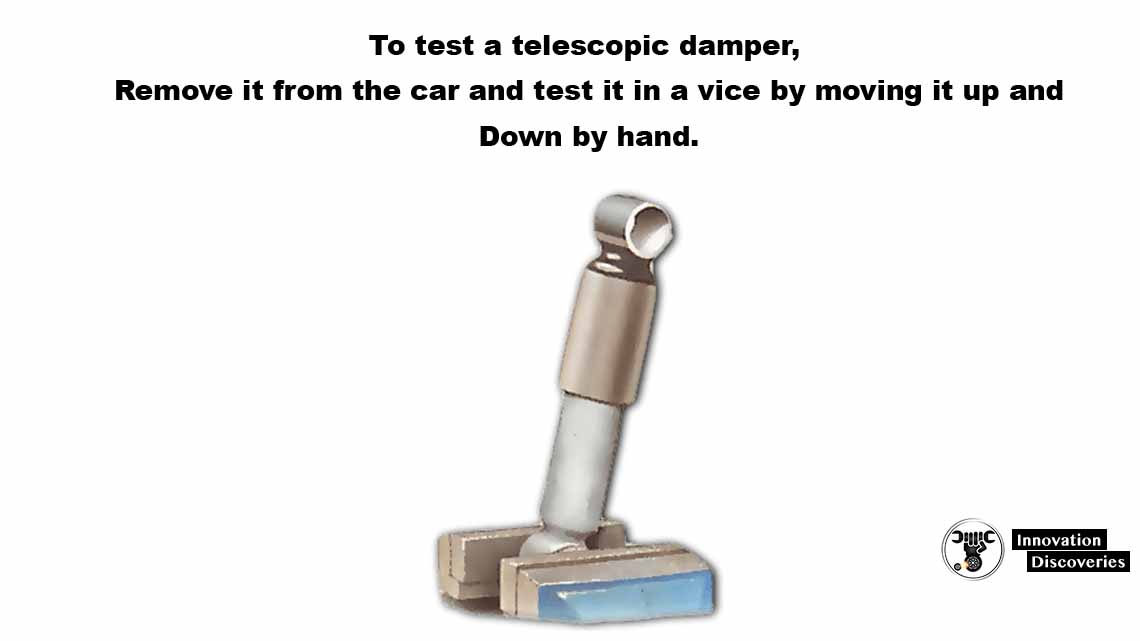Engines prone to rock on their rubber mountings,
Particularly at idling speeds, have extra dampers or
Plain bars with rubber-bonded bushes at either end to hold them steady.
Cars with transverse engines, and a few others, have dampers – either plain steady bars,
Hydraulic telescopic units or a combination of both.
Check the dampers during major services, every 12,000 miles (20,000 km),
Or if you suspect that the engine is moving abnormally.
This may show as a thump when accelerating or braking,
Sometimes accompanied by excessive movement of the gear lever.
Inspect the bushes for distortion, softness, perishing, cracking or oil contamination.
Try to move the bar by hand or with a lever. If it moves at all, one or both bushes may be faulty.
Remove the bar and fit new bushes. On some cars the bushes are integral and you have to replace the whole bar.
Unbolt the bar at both ends and remove it. Inspect the bar and its bolts and mounting points, to make sure they are not damaged, bent or rusted. Replace any doubtful parts.
Replaceable bushes are usually a simple push-in fit.
Early Minis have metal cones which fit inside the bushes:
Press these in with a vice to make the bar easier to refit.
When refitting the bar, you may need to lever it into position while you tighten the bolts. Check a telescopic damper in the same way,
But also look for signs of hydraulic leaks.
If you find a faulty damper, check the other engine mountings to make sure,
That the excessive movement has not damaged them.
Check also to see if the mountings have softened, cracked, perished or
Separated at the rubber-to-metal bond.
Types of engine damper
There may be one or two dampers,
Usually mounted between a bracket on the cylinder head and
Another on the bulkhead. Dampers are also sometimes fitted from the engine block or
Sump to a mounting bracket at the front chassis or subframe cross member. The damper may be a steady bar a steel rod with a rubber bushed eye at each end,
Or a telescopic hydraulic damper.



Open the bonnet, and remove any components that are in the way. Wipe the bar, its bushes and the mountings clean. Inspect the bushes by levering them upwards,
This will reveal any cracks or deterioration in the rubber. Any excessive movement either upwards or sideways suggests a faulty bush. Renew as necessary.
Checking adjustable steady bars
Some steady bars are adjustable. Adjust the bar until there is no strain on it when the engine is in its normal position.
If the steady bar is adjusted so that it is too long or short,
This will put a constant strain on the rubber bushes.


Hold the bar with self-locking grips and rotate it.
After adjustment, it should be possible to just move the bar against the tension of the bushes. A service manual for the car may give a maximum and minimum length.
If you have to adjust it outside this range,
Probably the engine mountings are distorted or perished.
Some bars can be adjusted in place by loosening a locknut and turning the bar;
Others have to be unbolted at one end.
When you tighten the locknut, take care you do not twist the bushes.
Checking a telescopic damper
If for any reason you suspect that a telescopic damper is not damping properly,
Either that it has weakened or
That it has seized solid – or if you suspect that it has leaked,
Remove it and test it in a vice the same way as a suspension damper.



One Comment